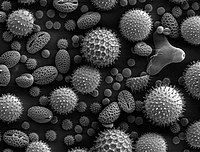
Photo from wikipedia
Positive temperature coefficient thermistors acting as heating devices are quickly growing in popularity and are being adapted into critical applications in many sectors from medical to space discovery. Positive temperature… Click to show full abstract
Positive temperature coefficient thermistors acting as heating devices are quickly growing in popularity and are being adapted into critical applications in many sectors from medical to space discovery. Positive temperature coefficient heating offers substantial benefits for miniaturized and portable analytical devices in key aspects such as energy efficiency, safety in overheating, size, scalability, and in discovering new thermal management strategies. These heaters can reach 230 °C without additional requirements for regulating electronics. By incorporating positive temperature coefficient technology into a commercial diode array photometric detector, the detector is made suitable for coupling with gas chromatography. The detector cartridge flow cell is heated to a specific target temperature within the range of 70 to 150 °C without impacting the detector's construction material or imparting any negative effect to the surrounding detector system electronics. Applying a temperature of 150 °C to the cell permits analysis of volatile and semivolatile compounds with a boiling point equivalent to that of n-hexadecene (285 °C). Model compounds of alkene homologues from C8 to C16 showed a maximum peak asymmetry of 1.10 with the heated cell design. A high degree of repeatability was observed with RSD of less than 0.01% in retention time and 3% in peak area ( n = 10).
Journal Title: Analytical chemistry
Year Published: 2018
Link to full text (if available)
Share on Social Media: Sign Up to like & get
recommendations!